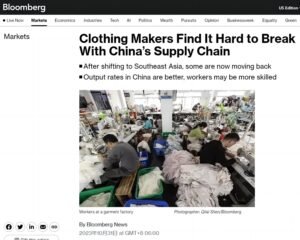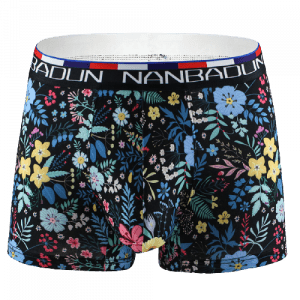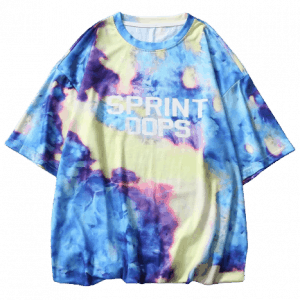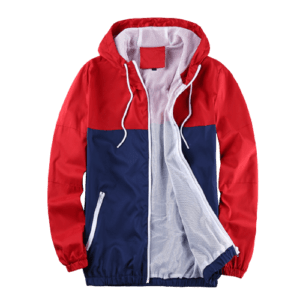According to the provisions of the Regional Comprehensive Economic Partnership Agreement (RCEP), the agreement needs to be ratified by at least 9 out of 15 members to enter into force, including at least 6 ASEAN member countries and at least 3 of China, Japan, Korea, Australia, and New Zealand.
On November 2, the ASEAN Secretariat, the custodian of the Regional Comprehensive Economic Partnership Agreement (RCEP), issued a notice announcing that six ASEAN member countries, including Brunei, Cambodia, Laos, Singapore, Thailand, and Vietnam, and four non-ASEAN member countries, including China, Japan, New Zealand, and Australia, have formally submitted their instruments of approval to the ASEAN Secretary-General to meet the threshold for entry into force of the agreement. According to the agreement, RCEP will enter into force for the above ten countries on January 1, 2022.
The entry into force of the agreement is important for further promoting free trade in the region, stabilizing the supply chain of the industrial chain, and promoting a high level of opening up in China.
RCEP key rules of origin interpretation:
1 Accumulation rules
“Cumulation” is an important supplementary rule, which refers to the determination of the origin of products, the production of products using materials of origin of other parties to the FTA as the production of materials of origin of the parties, the FTA region as a whole, to promote the freedom of trade within the region.
Cumulative rules essentially lower the threshold for products to obtain the qualification of origin, with a “softening” effect, to help encourage producers to allocate production resources in the region of each party, to strengthen the coordination of upstream and downstream industries, which in turn is conducive to the development of the regional industrial economy and intra-industrial trade.
2 Tiny content rule
Under Article 7 of the Agreement, if a portion of the non-originating material used in production does not meet the criteria for a change in tariff classification, the goods may still qualify as originating as long as the value or weight of the non-originating material does not exceed 10%.
The minor content under RCEP is allowed on a value basis for all goods under Chapters 1 through 97, i.e., the value of the non-originating material used in the production of the goods and not subject to a change in tariff classification does not exceed 10% of the FOB price of the goods; the minor content for goods under Chapters 50 through 63 (textile raw materials and textile products) is also allowed on a weight basis, i.e., the weight of the non-originating material not subject to a change in tariff classification does not exceed 10% of the total weight of the goods.
3 Enterprise origin independent declaration
According to Article 16 of the Agreement “Certificate of Origin”, RCEP will allow the use of a certificate of origin issued by visa agencies, declaration of origin issued by approved exporters, and declaration of origin issued by exporters or producers.
This marks that China’s certificate of origin system will gradually change from the model of certificate of origin as the main certificate of origin to the mode of parallel issuance of a certificate of origin by authorized agencies and declaration of origin by enterprises independently. The introduction and vigorous implementation of the independent declaration of origin system is one of the important features of the high-level free trade agreement, which greatly saves the administrative costs of the government and the operating costs of enterprises, and further improves the customs clearance time of goods.
In addition, according to the text of the RCEP agreement, in the next 10 years, up to 20 years, China will also introduce a model that does not set entry thresholds and any exporter or producer can issue a declaration of origin. This mode will eliminate the export enterprises to apply for the certificate of origin of goods or to apply to the Customs approved exporter qualification-related procedures, to further improve the efficiency of international trade logistics, reduce the operating costs of enterprises, and has an important significance for China’s export enterprises to improve international competitiveness.
4 Back-to-Back Certificate of Origin Concept
Article 19 of the Agreement provides for the issuance requirements and verification of back-to-back certificates of origin. The back-to-back certificate of origin is actually a certificate that the goods remain eligible for origin without being processed beyond the provisions of this article, which is essentially an endorsement of the certificate of origin or declaration.
RCEP back-to-back certificate of origin is a certificate of origin issued by an intermediate party flexibly in batches and phases again for goods that have been issued by the original exporting party, and the relevant goods can still enjoy preferential tariff treatment when imported by other parties, which greatly improves the flexibility of enterprises in sales strategies and logistics arrangements.
Customs recommendations
The rules of origin under the RCEP agreement present complexity and diversity, providing more possibilities and options for operators to optimize their supply chain layout in the Asia-Pacific and even globally. It is suggested that enterprises should strengthen the study of RCEP rules of origin, make arrangements for production and logistics in advance according to their own products and industrial chain characteristics, establish the concept of transnational industrial development, optimize industrial layout, improve enterprise management efficiency, and make good use of free trade agreement preferences.




























